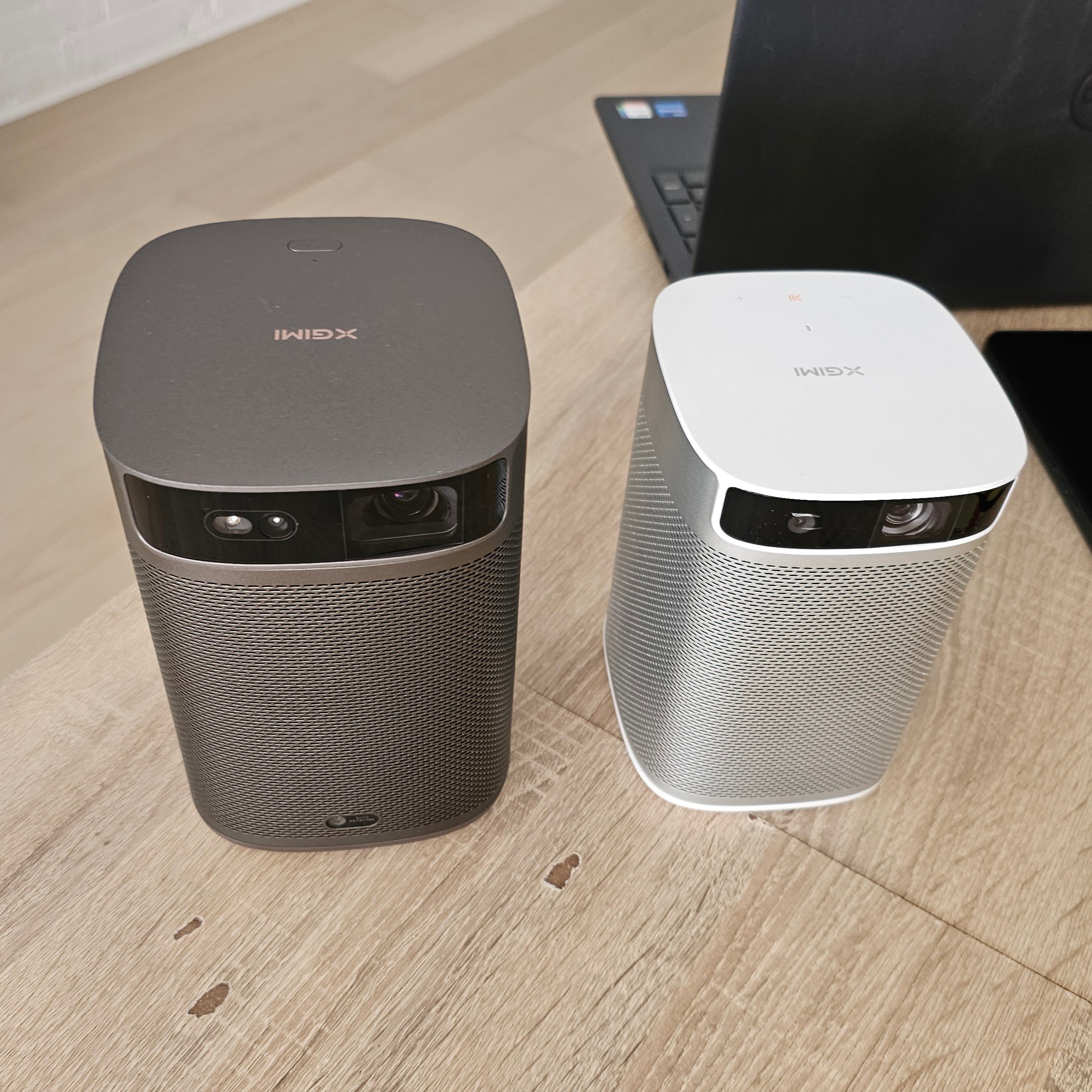XGIMI MoGo 2 Pro: New Display Form Factors Lead to New Vendors
XGIMI recently launched its latest smart projector, the MoGo 2 Pro (press release) in New York. The projector belongs to a relatively new category of home entertainment display that combines front projection, portability, and smart TV streaming capabilities over WiFi. As with previous display technology shifts, smart projectors are leading to new companies and brands.
XGIMI (pronounced, “ex-jimmy;” loosely translated from Chinese as, “excellence in square meters”) was founded nine years ago in Chengdu, China. IDC ranked it as China’s projector market share leader by 2018, and it has sold 4.5 million units since launch. XGIMI started selling its first portable 1080p projector, the MoGo Pro, in 2019. There are other notable Chinese competitors using the new category to grow, including Anker’s Nebula brand, but large consumer electronics brands like Samsung and HiSense are also competing (see Techsponential’s CES 2023 report).
All of XGIMI’s projectors use Android TV, which has full global reach (unlike Amazon Fire or Roku which are at least somewhat regional), and allows XGIMI to focus entirely on hardware rather than the content user interface, streaming capabilities, or apps. (Note: the Netflix app is not natively supported, so many people may still prefer to attach a streaming stick from Amazon or Roku.)
XGIMI expects that consumers’ primary entertainment display will be a flat panel TV, but that secondary displays can be well served by projectors so long that all is required is a blank wall. XGIMI also sells ultra short throw (UST) projectors that benefit from a fixed position and screen and can be used without as much light control. At the MoGo 2 Pro event in New York, XGIMI showed off the projector in different use cases: replacing a small bedroom TV with a 100” image, movie night in an eat-in kitchen, and even watching content in the bathroom.
The $599 MoGo 2 Pro is notable for some contrarian design decisions. In a category where portability is a core part of the value proposition, the MoGo 2 Pro is actually larger and heavier than the original. It’s still small and light (2.4lbs) enough to move from room to room, but the larger footprint provides more room for the light engine and larger speaker enclosures. As a result, it is almost twice as bright as its predecessor and audio is significantly louder. This addresses real pain points for a device that is frequently used in less than ideal lighting conditions and without the benefit of a soundbar.
That decision to prioritize performance over size also pays competitive dividends: while the MoGo 2 Pro does not use a laser light source like Anker’s inch-or-so slimmer Nebula Capsule 3 Laser, the MoGo 2 Pro is brighter (400 ISO lumens) and costs $200 less than the Nebula (which is spec’d at 300 ANSI Lumens). XGIMI set up the MoGo 2 Pro and Nebula Capsule 3 Laser side-by-side in the kitchen area of the Manhattan apartment it rented for the event. While the difference was not dramatic, the MoGo 2 Pro was indeed obviously brighter, louder, and faster at adjusting keystone correction and autofocus — all at a lower price point.
While the 1080p MoGo 2 Pro is not aimed at videophiles, it has been tuned to provide up to 90% DCI-P3 color coverage and the D65 Hollywood color temp. In a moderately light-controlled environment and screen sizes significantly below the stated maximum 200”, the MoGo 2 Pro should provide a satisfying picture for casual TV, streaming, sports, and movies. Combing through the specs page, I was surprised to discover that it will even support 3D, though active shutter glasses will cost you $29 each.
The rest of the tech specs are reasonable but not terribly exciting. Connectivity is only dual-band WiFi 5 (not 6 or 6E) plus Bluetooth 5.0, which is essential for headphones. There is a 3.5mm output jack for connecting better wired speakers. The MoGo 2 Pro’s Android TV 11.0 has Chromecast built-in, 16GB of storage, and is supplemented by a USB-C, USB-A, and HDMI 2.0 (not 2.1). The MoGo 2 Pro omits a battery entirely but it will run off of external USB-C battery packs, so you’ll need to invest in one of those or an extension cord if the 8’ power cable doesn’t reach where you place the unit.
To discuss the implications of this report on your business, product, or investment strategies, contact Techsponential at avi@techsponential.com.






